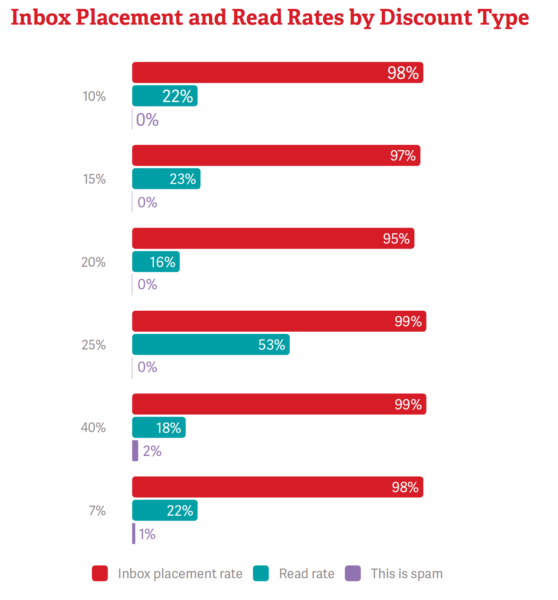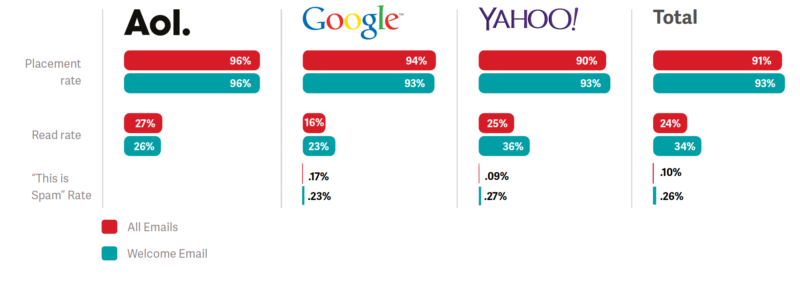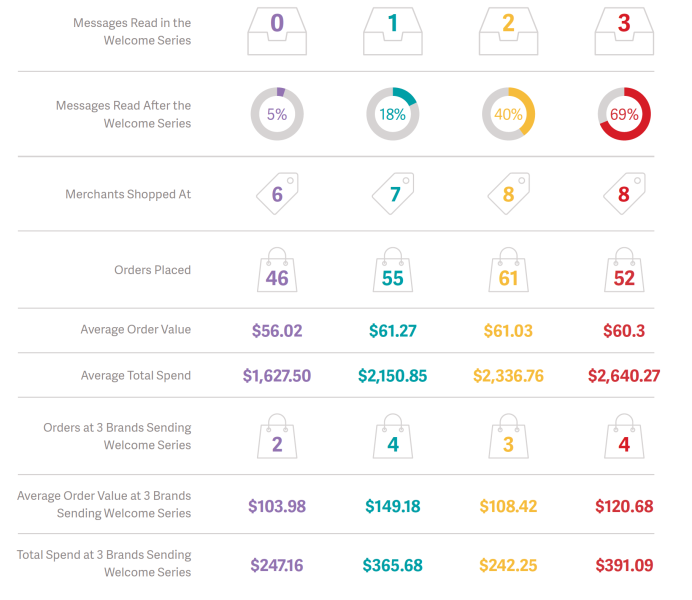How Welcome Emails Help Predict Future Subscriber Engagement & Value
Columnist Tom Sather analyzed the first emails 100 retailers sent to new subscribers. He shares the results here.

Sending welcome emails to new subscribers is considered a best practice among most email marketers today. At the very least, it helps confirm permission with the subscriber, sets expectations and provides a greater chance of achieving a conversion — whether you want recipients to download an app or redeem an exclusive discount for new subscribers.
A recent study by my employer, Return Path, looked at the top 100 retailers’ welcome emails for trends and insights and found only 75 percent of retailers sent welcome messages and performance lagged for those didn’t. (The full report is available for download. Registration is required.)
Subscribers that read these welcome emails were also far more likely to read future promotional emails and to buy from these retailers. Those who didn’t read the welcome emails were extremely unlikely to read any future messages, but, interestingly, they still showed high value.
And The Winner Is… Engagement, For Better Or Worse
A look at two million email subscribers’ interactions with brands’ emails, including welcome emails, showed that the welcome email is the best time to reach subscribers. It’s the ideal time to achieve reach and grab readers’ attention, and it can also help you weed out bad addresses and improve your list quality — something that can help prevent future deliverability issues.

The vast majority of welcome messages were simple emails welcoming, thanking, or confirming a subscription, and perhaps a lost opportunity. Only a quarter of welcome emails seen offered some promotion in the subject line, providing another opportunity for subscribers to convert.
The response we observed to welcome emails showed that subscriber attention was front and center for these brands, as subscribers read welcome emails 42 percent more often than regular, promotional emails. However, with such a small number of these retailers using such offers, we can assume there was a lost opportunity to engage these new subscribers and grow revenue.
Welcome emails were also two-and-a-half times more likely to receive subscriber spam complaints — when a subscriber marks a message as junk or spam in a webmail interface — than future promotional emails (.26% versus .10%). But the higher complaint rates didn’t appear to affect inbox placement rates.
Welcome emails at AOL, Gmail and Yahoo, in total, reached the inbox 93% of the time, and future promotional emails were delivered to the inbox 91% of the time. While there’s room for improvement, there wasn’t a dramatic decline in placement either.
One reason to send welcome emails, some marketers argue, is to improve chances for long-term engagement. In this analysis, it was found that those that read the initial welcome message were far more likely to read subsequent messages from a brand. While messages being read by subscribers dropped dramatically after the first welcome email was read, future messages were read at about a 50% rate for 180 days after.
Subscribers that didn’t read the initial welcome message were extremely unlikely to read any future messages either. These “unengaged” subscribers read future promotional emails at an average of less than 5%.

As mentioned previously, very few of these retailers, 29 in fact, were choosing to include offers in their subject lines. For brands that did mention discount offers, six different amounts were seen with an average read rate of 20%.
Not only was the read rate for these messages lower than the average welcome email read rate (34%), but they were also read at a slightly lower rate than future promotional emails (23%). The discounts used ranged from 7% to 40% with the 20% discount being read the least (16%) and achieving the lowest inbox placement (95%).
Not only was the read rate for these messages lower than the average welcome email read rate (34%), but they were also read at a slightly lower rate than future promotional emails (23%). The discounts used ranged from 7% to 40% with the 20% discount being read the least (16%) and achieving the lowest inbox placement (95%).
Discounts of 25% in welcome emails were read at a staggering 53%, but only one brand was observed offering this type of discount — The Gap — and it’s unlikely the subject line alone was the reason for the high read rates.
Inbox placement rates were quite high for all of these messages including discounts, so it can be safely assumed these types of offers are not something marketers need to worry will be caught by spam filters.
So, is using a discount in the subject line a bad thing, then? Perhaps, but we have too little data to really declare this practice detrimental. For one, only a small set of brands were observed using this practice. Secondly, some brands already offer the same discount on their website after the subscriber signs up, so it is unnecessary to open the welcome email to use the discount code.
Knowing that The Gap was more successful than other brands at getting subscribers to open the welcome email hints that done properly, discounts can be effective.

Predicting Future Value With Welcome Emails
As mentioned above, if a subscriber doesn’t read a welcome message, it’s unlikely they’ll read any future promotional messages. Should one remove these subscribers from their file? Isn’t conventional wisdom that continuing to send to these “inactives” will cause the ISPs’ engagement filters to cause more deliverability issues?
Not so fast. While the ISPs may look at how much email was read or ignored in these filtering decisions, it would be a bad move to purge these addresses. By looking at consumer intelligence data, namely e-receipts, the group that didn’t read the initial welcome message, and consequently future promotional messages, still proved to be valuable with average total spend during the 180 days at $1,628 across these top retailers.
It’s likely these individuals are using a secondary email account for purchasing things online and receiving marketing messages. Suppressing them from future marketing messages may not hurt anything, but it’s also not necessary either.
In fact, for brands sending a series of welcome messages, what messages they read in that series could predict future value. If no welcome messages were read in the series, only 5% of future promotional messages would be read.
If they read one in the series, they would read an average of 18% of future messages. Reading two messages improved the odds they would read subsequent messages (40%), and reading three proved to be even better with 69% of all future promotional emails being read. This last group also spent 62% more than the group that didn’t read any welcome emails.
What We Can Learn From Welcome Emails
Welcome emails are more valuable than just on-boarding new subscribers and setting expectations. Welcome emails can help marketers in three other areas:
- Improving List Quality – Remember, welcome emails were about 2.5x more often than subsequent messages. As long as marketers are enrolled in feedback loop programs, marketers can tell who is complaining and unsubscribe these users from future messages and help reduce any future deliverability issues. Not only that, it allows marketers to remove any “unknown users” — email addresses that do not exist and bounce — which can cause reputation and deliverability issues. Even more advanced marketers will monitor their welcome emails for spam traps — decoy email addresses used to catch spammers — and isolate and remove suspect addresses.
- Increasing Conversions – Hands down, welcome emails are read far more than other type of promotional message that subscribers will receive. Marketers can take advantage of this attention early on in the relationship. Focus on testing offers in the welcome emails, and also consider sending more to these users early on as before their attention fades.
- Optimizing For Revenue – Welcome emails and series were shown to predict how much a subscriber will spend and how much they’ll engage with future emails. Those that read most, or all, welcome emails are far more likely to spend more than those that didn’t read any email messages. Since we can also see that the “unengaged” group is still valuable, but somewhat difficult to reach via email, other tactics can be tried to reach these subscribers, like using their email address to re-market on social channels.
Contributing authors are invited to create content for MarTech and are chosen for their expertise and contribution to the martech community. Our contributors work under the oversight of the editorial staff and contributions are checked for quality and relevance to our readers. MarTech is owned by Semrush. Contributor was not asked to make any direct or indirect mentions of Semrush. The opinions they express are their own.
Related stories
New on MarTech

